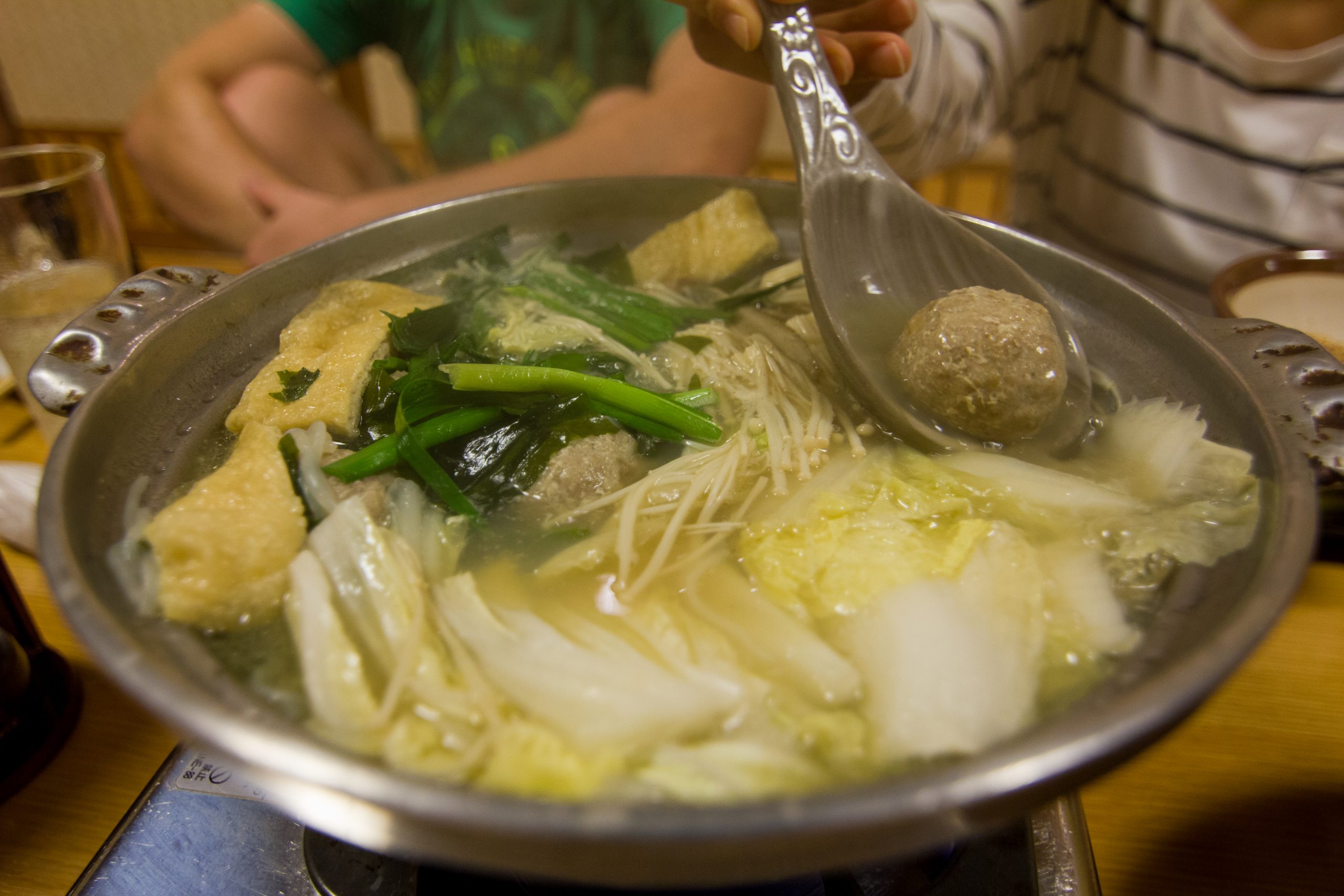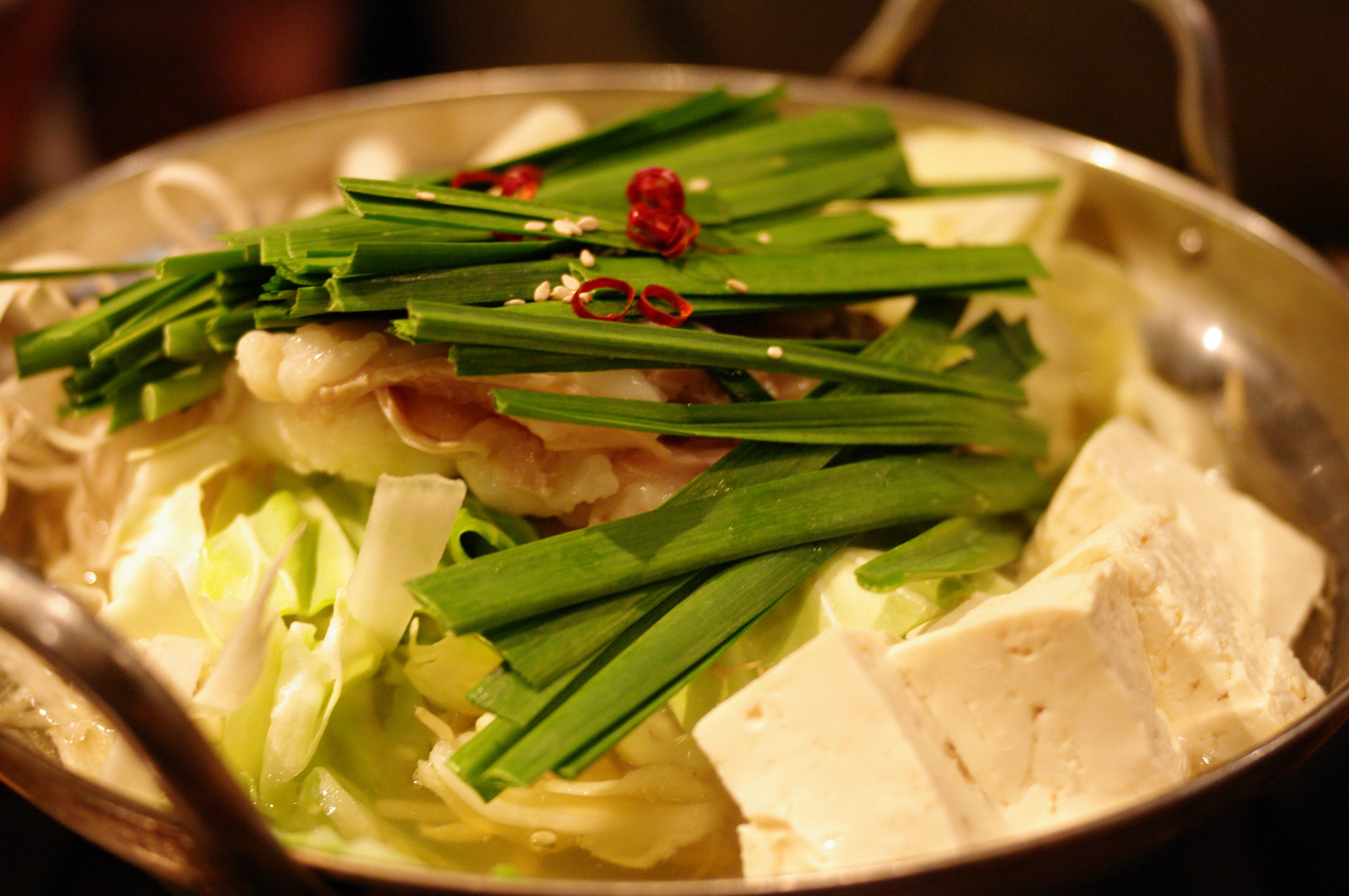Nabemono: The Delicious Variations of Japanese Hot Pot
Write a response
When temperatures drop across Japan, people begin looking for ways to keep warm. For mealtime, the best way is to gather friends and family around for nabemono, the Japanese hot pot. Also simply called nabe, this one-pot dish has numerous variations across the different regions and culinary traditions of Japan.
With the many styles of nabe, we wanted to narrow it down to some of our favorite variations. So let’s get the broth boiling, throw in some fresh ingredients, and taste our way around Japan.
North of Tokyo, in the Ibaraki region of eastern Japan, anko nabe is a winter specialty. Anko is a type of fish that you might know as anglerfish and has long been a delicacy in Japan. The skin and many of the organs of this deep-sea fish is combined with numerous vegetables to make this thick and incredibly unique stew. The preparation of the anko fish is also a unique butcher style that has become a reason for traveling to Ibaraki on its own. This fish is too big and heavy, too soft and slimy, to be handled on a butcher block. Because of this, it has to be hung on a large, steel hook and be cut up that way. If you see the skeleton of an anko hanging outside a restaurant, you’ll know you can find anko nabe being served inside.

by George N
This nabe is more of an interesting cultural variety than regional. Chankonabe began as a weight-gain diet for sumo wrestlers but is now served in restaurants in many cities, sometimes operated by retired sumo wrestlers. Most commonly used with a chicken broth soup based, chankonabe can also be made with a dashi base. There really isn’t a fixed recipe for this dish, it’s all about the caloric intake. Large quantities of chicken, fish, tofu, or beef can be combined with high-calorie vegetables. To keep adding even more calories, chankonabe is usually served with endless amounts of beer and rice!

by kobakou
Those living in Osaka or the surrounding Kansai region might prefer to eat harihari-nabe. This hot pot is usually made with two ingredients: minke whale meat and a Japanese green vegetable called mizuna. Whale meat was traditionally used because of its abundance and low price but now pork or duck might be substituted for the whale meat since it is now difficult to obtain. With a simple dashi base, this nabe is easy to make and incredibly tasty.

by Jun
Hokkaido, in the northernmost region of Japan, is the perfect place to find ishikare-nabe. Starting with a miso-based broth, numerous vegetables and salmon are then stewed down into the soup. Give the chunks of delicious, fresh salmon and pieces of tofu about 10 minutes in the broth for perfection. After a day spent skiing the mountains of Hokkaido, ishikare-nabe is the best way for seafood-lovers and pescetarians (or really anybody) to warm up.

by lowch.com
This specialty of the Akita prefecture is a unique blend of nabe and a grill. Kiritanpo starts with freshly cooked rice that is mashed into a cylindrical shape on skewers. The skewers can be lightly grilled on charcoal before being cooked within a nabe with chunks of chicken and leeks, mushroom, or other vegetables. Originally, the kiritanpo skewers were enjoyed with just a coating of miso paste of being grilled and only sometimes within a nabe. Now, you’ll find this delicious nabe all over the region with the white chunks of kiritanpo sticking out of the pots.

by Kmkoji
On the southwest end of Japan, you will find the island of Kyushu and endless bowls of mizutaki. This is another chicken hot pot that combines dashi and shiitake mushrooms (amongst other vegetables). One unique aspect of this nabe is that it’s usually served with a dipping sauce like ponzu, made with mainly soy sauce and citrus. The bigger the pot, the better, so gather your friends and family for this satisfying, communal nabe.

by Yoji Shidara
Originally a local cuisine of Fukuoka, motsunabe is made with beef or pork offal in a soy sauce base. After boiling for a bit, add cabbage, chives, and some chili peppers when it’s almost done then finally some Champon noodles. Since this nabe uses offal, it usually has a very low price point. Because of this, the dish has become popular nationwide and can be found in many restaurants across Japan.

As one of the most common and versatile styles of nabe, oden can be found everywhere (but only in winter). From fancy restaurants to food stands, convenience stores to home kitchens, this comfort food is beloved by all. Oden has many variations depending on the region and where you are purchasing it. Food stands usually have the ingredients separated but within one large pot of broth so you can build your own bowl. Regional variations will vary the broth from darker to lighter stocks, sometimes served as a side-dish and other times as a main course. Whatever the variation, oden is a must-have.
The focus of shabu-shabu is the thinly sliced cuts of beef. The broth, usually water or a simple, light dashi, is only there to dip the thin meat in for a few seconds. The flavors will come more from the sauces served alongside the shabu-shabu. Ponzu is a popular sauce to use but if you’re eating in a restaurant, they’ll usually provide soy sauce, ponzu, sesame, and many other options so the customer can build their own dipping sauce to taste. The customizable sauces and quick-cooking meats have made shabu-shabu popular all over the country and around the world.

by cyclonebill
Similar to shabu-shabu because of the use of thin slices of beef, sukiyaki differs in preparation. This time, the meat is slowly simmered in a sweeter and more flavorful broth, usually made from soy sauce, sugar, mirin, and dashi. Sukiyaki has two main traditions, one from Kanto and the other from Kansai. The major difference between the two is when the meat is cooked. Kanto-style starts with the broth then has the meat added later while Kansai-style has the meat seared in the pot first before adding the broth and vegetables. Another unique feature of sukiyaki is how it’s enjoyed: you will dip the cooked meat into egg yolk before eating.
Every prefecture of Japan has their own tradition around the communal nabe experience. Each one is closely related to the ingredients and customs of the local region. Hopefully, this guide will inspire you to explore all the different flavors and experiences each nabe has to offer.